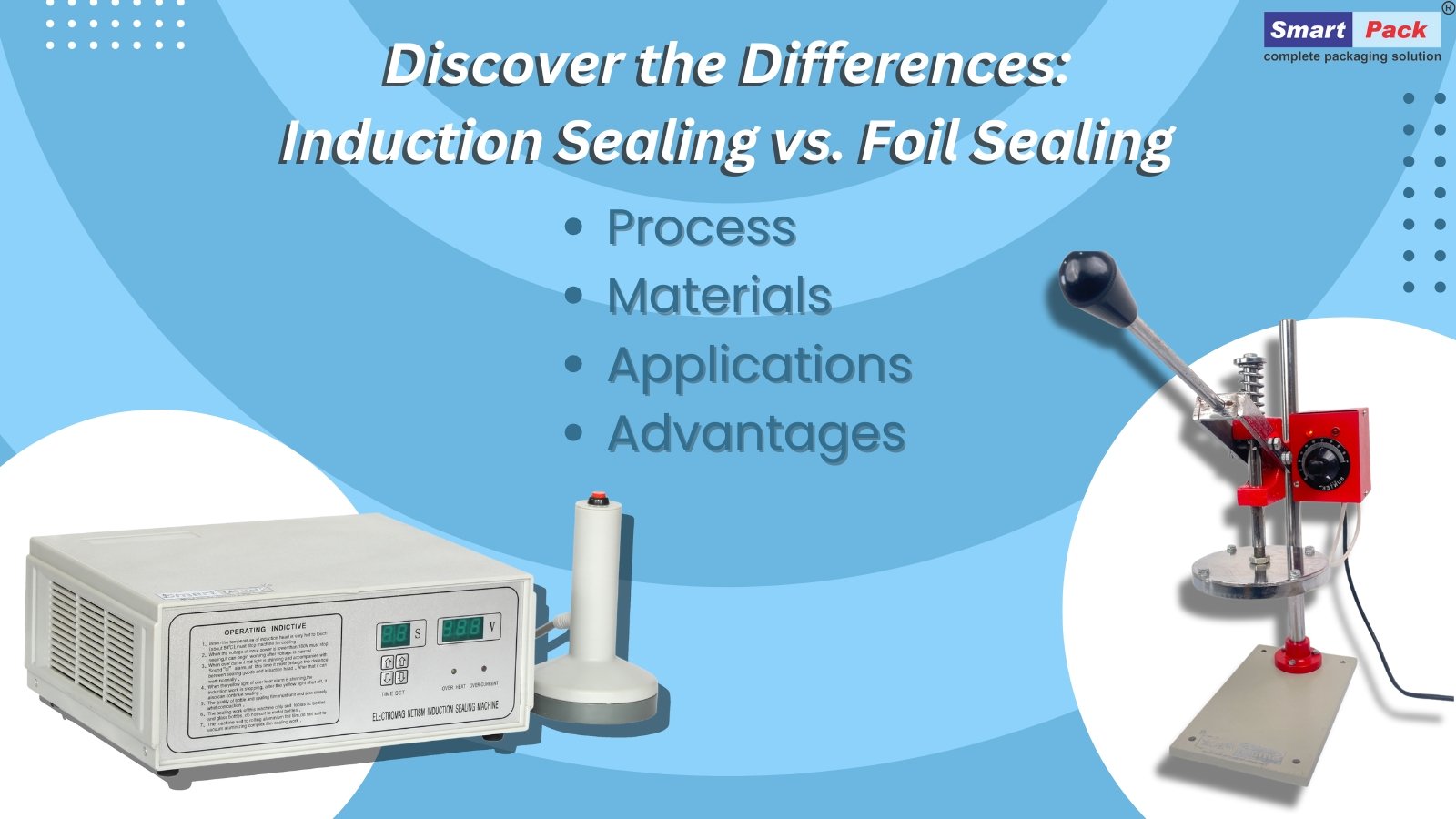In the area of packaging, sealing plays a major role in preserving product freshness, preventing leaks, and ensuring product safety. Two popular sealing methods, induction sealing and foil sealing, are often employed in various industries. While both techniques achieve the same goal of sealing containers, they differ significantly in their processes, applications, and outcomes. Let’s delve into the variation of each method to understand their differences better:
Induction Sealing:
Principle: Induction sealing relies on the principle of electromagnetic induction to create a hermetic seal between the container and the lid.
Process:
- A foil liner containing a heat-sealable layer is placed onto the container’s rim.
- The container passes through an induction sealing machine equipped with an induction coil.
- When the container passes under the induction coil, an alternating magnetic field is generated, causing the foil liner to heat up.
- The heat activates the heat-sealable layer, which bonds the foil liner to the container, creating a secure seal.
Materials: Induction sealing is compatible with containers made of materials such as plastic, glass, and metal, provided they have a suitable metal content.
Applications: Commonly used in industries such as pharmaceuticals, food and beverage, cosmetics, and chemicals for sealing products like bottles, jars, and containers
Advantages:
- Provides perfect seals, ensuring product integrity and safety.
- Offers a tight seal that preserves product freshness and extends shelf life.
- Suitable for sealing containers with irregular shapes or openings.
- Non-contact sealing process minimizes the risk of contamination.
Foil Sealing:
Principle: Foil sealing, also known as cap sealing, utilizes heat and pressure to create a seal between the container and the foil.
Process:
- A pre-cut foil lid is placed over the container’s opening, typically with the assistance of a sealing head or machine.
- The container and foil lid are then subjected to heat and pressure, either through direct contact or using a heat sealing machine.
- The heat melts the heat-sealable layer of the foil, bonding it to the container’s rim and creating a secure seal.
Materials: Foil sealing is commonly used with containers made of plastic, glass, or paperboard, as long as they have a compatible sealing surface.
Applications: Widely employed in industries such as dairy, pharmaceuticals, beverages, and cosmetics for sealing products like yogurt cups, bottles, and tubes.
Advantages:
- Provides airtight seals that prevent leakage and contamination.
- Offers excellent barrier properties against moisture, oxygen, and light.
- Compatible with high-speed production lines, making it suitable for mass production.
- Allows for customization with embossing, printing, or labeling on the foil lid.
Key Differences:
Sealing Mechanism:
- Induction sealing relies on electromagnetic induction to generate heat and create a seal between the container and the foil liner.
- Foil sealing uses heat and pressure to melt the heat-sealable layer of the foil and bond it to the container’s rim.
Contact vs. Non-Contact:
- Induction sealing is a non-contact sealing method where the container and foil liner do not come into direct contact with the heat source.
- Foil sealing involves direct contact between the container, foil lid, and the heat source, which can sometimes lead to contamination risks.
Tamper-Evidence:
- Induction sealing provides tamper-evident seals by bonding the foil liner to the container, making it evident if the seal has been broken.
- Foil sealing also offers tamper-evident features, but the level of tamper resistance may vary depending on the sealing process and materials used.
Compatibility:
- Induction sealing is compatible with a wide range of container materials, including plastic, glass, and metal, as long as they have a suitable metal content.
- Foil sealing is commonly used with plastic, glass, or paperboard containers that have a compatible sealing surface.
Speed and Efficiency:
- Foil sealing is often preferred for high-speed production lines due to its efficiency and compatibility with automated sealing equipment.
- Induction sealing may require additional setup and adjustment time but offers advantages such as non-contact sealing and suitability for containers with irregular shapes.
While both induction sealing and foil sealing serve the common purpose of sealing containers, they employ different mechanisms and processes to achieve this goal. Understanding the differences between these two sealing methods is essential for manufacturers to choose the most suitable option based on their specific requirements, production processes, and product characteristics. Whether it’s ensuring product integrity, extending shelf life, or enhancing brand image, selecting the right sealing method is crucial for success in today’s competitive market landscape.

